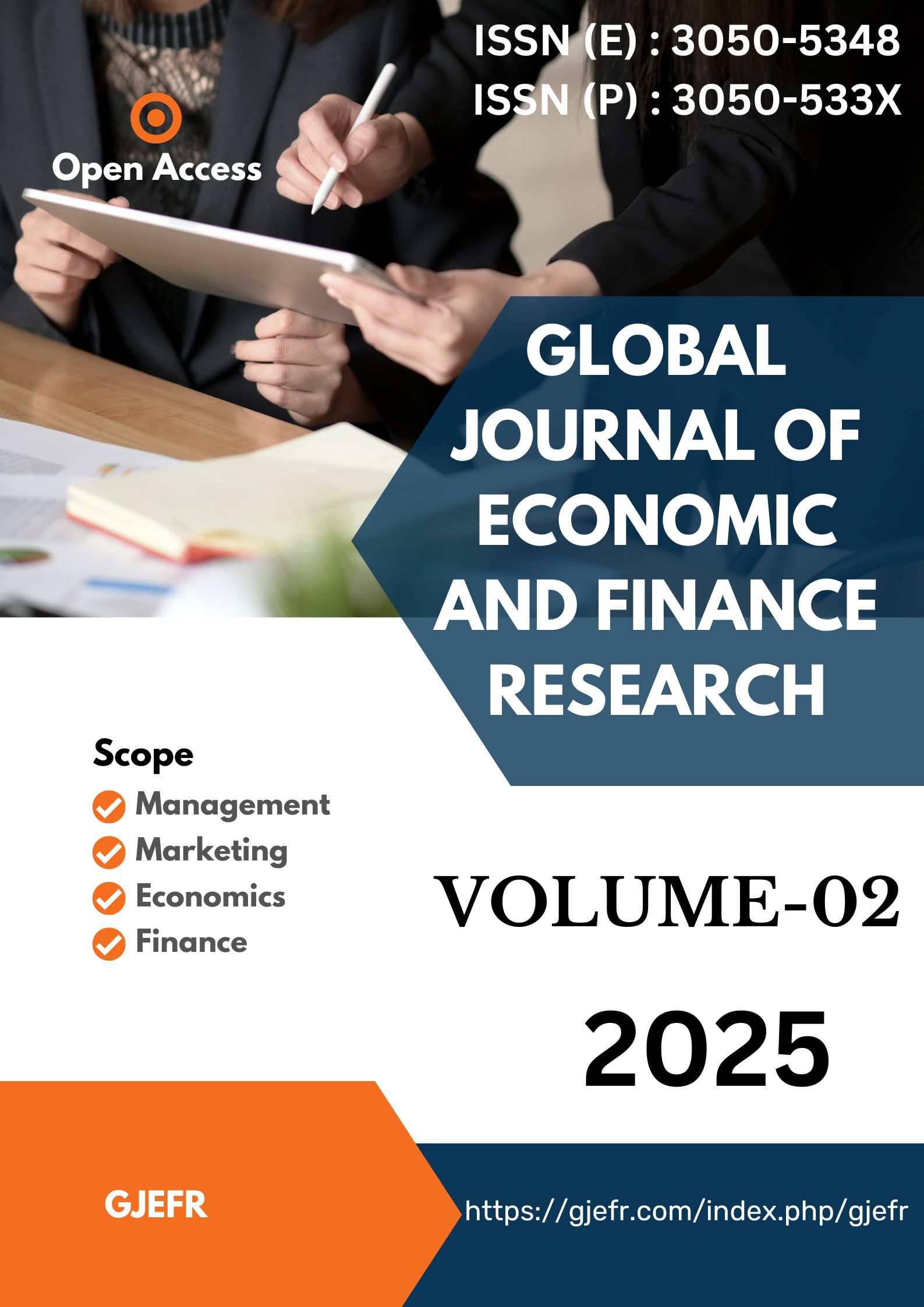The Power of Listening: Transforming Communication and Leadership in Business Environments
DOI:
https://doi.org/10.55677/GJEFR/02-2025-Vol02E1Keywords:
Performance Management, International Human Resource Management, Communication in Leadership, Business Transformation, Active ListeningAbstract
In an era of heightened global competition, multinational enterprises (MNEs) must devise performance management (PM) systems that align with overarching corporate strategies while concurrently accommodating local cultural and institutional realities. This paper provides an in-depth analysis of Amazon’s performance management framework through an International Human Resource Management (IHRM) lens. Drawing upon a comprehensive review of secondary data—including corporate publications, academic research, and reputable journalism—this study scrutinizes the inherent tension between Amazon’s standardized, metrics-driven evaluation system and the culturally diverse settings in which it operates.
The findings reveal that Amazon’s universally applied PM practices, largely reflective of its U.S.-based corporate ethos, can clash with the norms and expectations of employees in collectivist or high power distance cultures. Such cultural incongruities may lead to heightened stress, elevated turnover, and diluted engagement, ultimately impeding the firm’s global talent strategies. Through an examination of key IHRM theories, this paper highlights the necessity of balancing global standardization with local responsiveness, and underscores the value of integrating qualitative assessments within predominantly metric-focused evaluation frameworks. The conclusion offers targeted recommendations for refining Amazon’s PM practices, including enhanced cultural sensitivity training, hybridized performance metrics, and the establishment of flexible local governance structures. By illuminating these challenges and prescribing pragmatic solutions, this research contributes to a deeper understanding of effective performance management in the contemporary global economy.
The findings reveal that Amazon’s universally applied PM practices, largely reflective of its U.S.-based corporate ethos, can clash with the norms and expectations of employees in collectivist or high power distance cultures. Such cultural incongruities may lead to heightened stress, elevated turnover, and diluted engagement, ultimately impeding the firm’s global talent strategies. Through an examination of key IHRM theories, this paper highlights the necessity of balancing global standardization with local responsiveness, and underscores the value of integrating qualitative assessments within predominantly metric-focused evaluation frameworks. The conclusion offers targeted recommendations for refining Amazon’s PM practices, including enhanced cultural sensitivity training, hybridized performance metrics, and the establishment of flexible local governance structures. By illuminating these challenges and prescribing pragmatic solutions, this research contributes to a deeper understanding of effective performance management in the contemporary global economy.
References
Amazon (2021). Leadership Principles. [Online]. Available at: https://www.aboutamazon.com/ (Accessed: various dates).
Bartlett, C.A. & Ghoshal, S. (1989). Managing Across Borders: The Transnational Solution. Boston: Harvard Business School Press.
Brewster, C., Sparrow, P. & Vernon, G. (2007). International Human Resource Management. London: Chartered Institute of Personnel and Development.
Briscoe, D., Tarique, I. & Schuler, R. (2012). International Human Resource Management: Policies and Practices for Multinational Enterprises. 4th edn. New York: Routledge.
Dowling, P.J., Festing, M. & Engle, A.D. (2013). International Human Resource Management. 6th edn. London: Cengage Learning.
Farndale, E. & Paauwe, J. (2005). ‘The role of corporate HR functions in multinational corporations: The interplay between corporate, regional/national and plant level,’ Human Resource Management Journal, 15(1), pp. 53–67.
Hofstede, G. (2001). Culture’s Consequences: Comparing Values, Behaviors, Institutions, and Organizations Across Nations. 2nd edn. Thousand Oaks, CA: Sage.
Irwin, N. (2020). ‘How Amazon Wins: By Steamrolling Rivals and Partners,’ The New York Times, 16 December. Available at: https://www.nytimes.com/ (Accessed: various dates).
Kantor, J. & Streitfeld, D. (2015). ‘Inside Amazon: Wrestling Big Ideas in a Bruising Workplace,’ The New York Times, 15 August. Available at: https://www.nytimes.com/ (Accessed: various dates).
Varma, A., Budhwar, P.S. & DeNisi, A. (2008). Performance Management Systems: A Global Perspective. London: Routledge.
Yin, R.K. (2018). Case Study Research and Applications: Design and Methods. 6th edn. Los Angeles: SAGE.
Edwards, T. & Rees, C. (2011). International Human Resource Management: Globalization, National Systems & Multinational Companies. 2nd edn. Harlow: Pearson Education.
Herzing, A.-W. & Pennington, A. (2014). International Human Resource Management.
Schuler, R. S. & Jackson, S. E. (2014). Human resource management and organizational effectiveness: yesterday and today,’ Journal of Organizational Effectiveness: People and Performance, 1(1), pp. 35–55.
The Human Resource Architecture: Toward a Theory of Human Capital Allocation and Development,’ Academy of Management Review, 24(1), pp. 31–48.
Downloads
Published
Issue
Section
License
Copyright (c) 2025 Global Journal of Economic and Finance Research

This work is licensed under a Creative Commons Attribution 4.0 International License.

